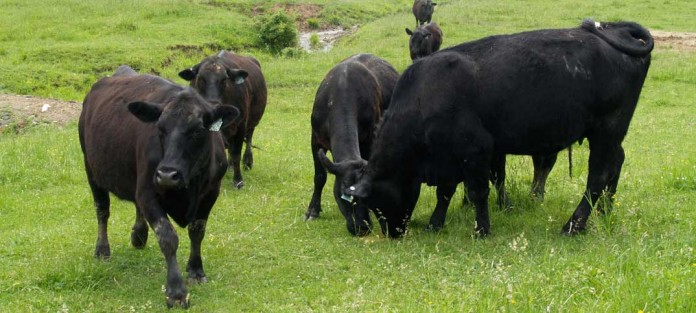Animals can be unpredictable. No matter how well you think you know your livestock, something could spook them, causing the animal to react quickly and violently.
A m
1 Animal behavior
Livestock are creatures of habit and prefer a routine (i.e. making feeding and milking times the same each day). Livestock also prefer being around other livestock. They can become frightened or agitated when separated from the rest of the group. When in large groups, livestock will often follow the leader, which can be beneficial when moving them from place to place.
2 Flight zone
Understanding an animal’s flight zone is important. The flight zone is an animal’s personal space and an animal will react depending on a person’s proximity to its flight zone and the person’s actions within its flight zone.
An animal’s point of balance is at its shoulders. Positioning yourself in front of an animal (in front of its point of balance) will make the animal step back, while slowly moving behind the animal will encourage it to move forward. Animals can not see behind them, so they will want to keep you in their line of sight or move away from you.
3 Facilities
Many injuries related to livestock around the farm can be resolved by considering facilities. Use concrete flooring with a rough finish and use grooved walkways in high traffic areas for better traction. Also, make sure there is proper drainage to prevent slipping. Install strong, durable fencing and gates that are recommended for the type of livestock you have.
Lighting should be even because shadows can scare animals. Make sure sharp or protruding objects are removed from areas where livestock or humans move. Alleys and chutes should be large enough for the animal to pass through, but not turn around, to keep them moving.
4 Exit strategy
When dealing with livestock in tight quarters, it is important to have a plan of escape. Consider constructing pens and gates with easy exits, or gaps in fencing that are just big enough for a person and not the animal to pass through. When entering a pasture or large enclosure, make sure there is a fast and easy method of escape.
5 Be patient
Probably one of the most important, and sometimes challenging, virtues when it comes to handling livestock is patience. When an animal refuses to cooperate, yelling and poking and prodding at the animal will only make the animal more nervous or agitated.
Use slow, but deliberate, movements around livestock; don’t be afraid, but don’t underestimate an animal, and avoid loud noises. Animals draw upon past experiences and treatment when reacting to a situation or a person.
6 Train employees
It is important to make sure anyone you hire to work with your livestock has been trained to properly handle the animals. Work beside them or keep yourself nearby until they are comfortable working with the animals. Emphasizing proper handling and safety guidelines and making sure everyone involved in the operation understands them is important in preventing a livestock-related accident.
Sources: Penn State University Extension, Animals Handling Tips; The Texas Department of Insurance, Livestock Handling Safety; and Utah State University Cooperative Extension, Livestock Safety.
Additional Resources: If you are planning on having visitors to your farm, whether it’s a school tour, a farm tour, or friends of the family who are not used to being around livestock, it is important to prepare for anything. Make sure fences and gates are secured and danger zones are clearly marked. Ohio State University offers some tips here.
(Farm and Dairy is featuring a series of “101” columns throughout the year to help young and beginning farmers master farm living. From finances to management to machinery repair and animal care, farmers do it all.)
More Farming 101 columns:
- 5 things young farmers should know about finances
- The farm balance sheet
- 5 items for your farm’s cash flow statement
- Personal and business records: Keep them separate
- What to include in your farm business plan
- How to approach a lender: Tips for getting a farm loan
- How to use microloans to get your farm started
- Saving for the future: 6 tips for young farmers
- How to create a farm safety kit
- 5 tips for child safety on the farm
- 4 tips for transporting livestock
- 5 ways to better understand tractor stability
- 6 farm equipment hacks











I didn’t know about how flight zones affect animal behavior. It makes sense that animals would behave like that; since a lot of livestock are prey animals. I’ll have to be careful if I need to approach an animal.
My dad retired from his office job recently, and he now plans to start a cattle farm in Queensland where he will be raising livestock from now on. I found it helpful when you informed us that it’s important for cattle pens and gates to have easy exits since we need a fast method of escape for them in case of emergencies. I’ll be sure to remember this while I look for where I can find high-quality bulls to recommend to my father soon.
My cousin raised a cattle farm, all the cows died